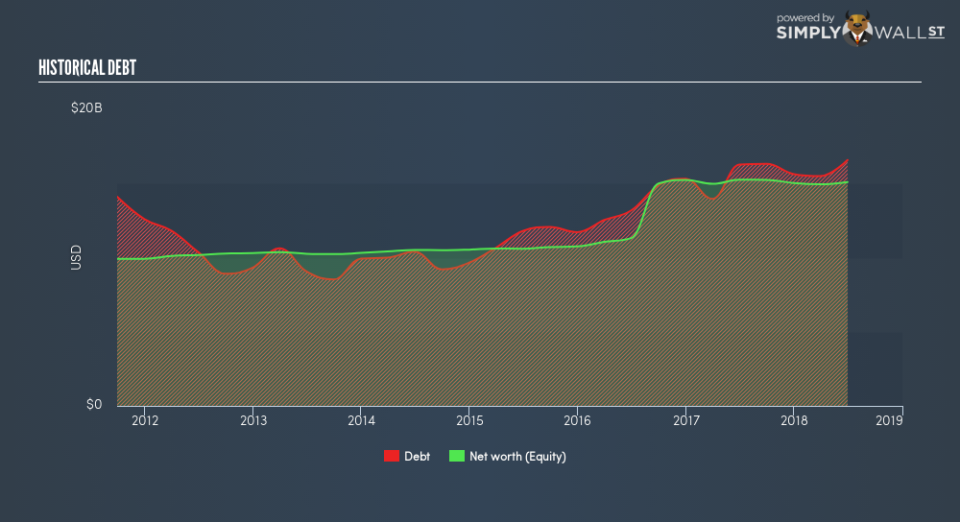Can These Factors Give You An Edge In KeyCorp (NYSE:KEY)?
KeyCorp (NYSE:KEY) is a large-cap stock operating in the financial services sector with a market cap of US$20.98b. As major financial institutions return to health after the Global Financial Crisis, we are seeing an increase in market confidence, and understanding of, these “too-big-to-fail” banking stocks. A set of reforms called Basel III was imposed in order to strengthen regulation, supervision and risk management in the banking sector. The Basel III reforms are aimed at banking regulations to improve financial institutions’ ability to absorb shocks caused by economic stress which could expose banks to vulnerabilities. Operating in USD, KEY is held to strict regulation which focus investor attention to the type and level of risk it takes on. Investors are viewing KEY with a more cautious lens and analysing these stocks using bank-specific metrics such as liquidity and leverage. Today we’re going to take a look at these metrics to gain more confidence investing in the stock.
See our latest analysis for KeyCorp
Is KEY’s Leverage Level Appropriate?
Banks with low leverage are better positioned to weather adverse headwinds as they have less debt to pay off. A bank’s leverage may be thought of as the level of assets it owns compared to its own shareholders’ equity. While financial companies will always have some leverage for a sufficient capital buffer, KeyCorp’s leverage ratio of less than the suitable maximum level of 20x, at 9.12x, is considered to be very cautious and prudent. With assets 9.12 times equity, the banks has maintained a prudent level of its own fund relative to borrowed fund which places it in a strong position to pay back its debt in times of adverse events. If the bank needs to increase its debt levels to firm up its capital cushion, there is plenty of headroom to do so without deteriorating its financial position.
What Is KEY’s Level of Liquidity?

Since loans are relatively illiquid, we should know how much of the bank’s total assets are comprised of these loans. Normally, they should not exceed 70% of total assets, consistent with KeyCorp’s case with a ratio of 63.4%. This is a reasonable ratio and suggests that slightly over half of the bank’s total assets are tied up in the form of illiquid loans, striking an appropriate balance between liquidity and interest income.
What is KEY’s Liquidity Discrepancy?
Banks operate by lending out its customers’ deposits as loans and charge a higher interest rate. Loans are generally fixed term which means they cannot be readily realized, conversely, on the liability side, customer deposits must be paid in very short notice and on-demand. This mismatch between illiquid loans and liquid deposits poses a risk for the bank if unusual events occur and requires it to immediately repay its depositors. Since KeyCorp’s loan to deposit ratio of 83.5% is within the sensible margin, below than the appropriate maximum of 90%, this level positions the bank cautiously in terms of liquidity as it has not disproportionately lent out its deposits and has retained an apt level of deposits.
Next Steps:
KeyCorp passes all of our liquidity and leverage checks which shows it is prudent in managing those factors. This gives us confidence in the operational side of the business, an important aspect to consider before investing in the stock. High liquidity and low leverage places the bank in an ideal position to repay financial liabilities in case of adverse headwinds. Today, we’ve only explored one aspect of KeyCorp. However, as a potential stock investment, there are many more fundamentals you need to consider. There are three essential aspects you should further examine:
Future Outlook: What are well-informed industry analysts predicting for KEY’s future growth? Take a look at our free research report of analyst consensus for KEY’s outlook.
Valuation: What is KEY worth today? Has the future growth potential already been factored into the price? The intrinsic value infographic in our free research report helps visualize whether KEY is currently mispriced by the market.
Other High-Performing Stocks: Are there other stocks that provide better prospects with proven track records? Explore our free list of these great stocks here.
To help readers see past the short term volatility of the financial market, we aim to bring you a long-term focused research analysis purely driven by fundamental data. Note that our analysis does not factor in the latest price-sensitive company announcements.
The author is an independent contributor and at the time of publication had no position in the stocks mentioned. For errors that warrant correction please contact the editor at editorial-team@simplywallst.com.

 Yahoo Finance
Yahoo Finance 
